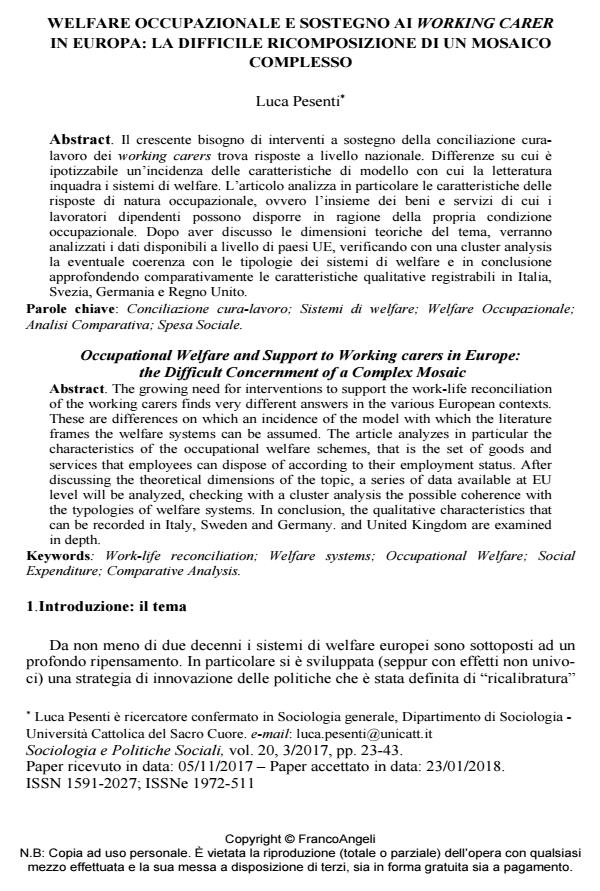Welfare occupazionale e sostegno ai working carer in europa: la difficile ricomposizione di un mosaico complesso
Titolo Rivista SOCIOLOGIA E POLITICHE SOCIALI
Autori/Curatori Luca Pesenti
Anno di pubblicazione 2018 Fascicolo 2017/3
Lingua Italiano Numero pagine 21 P. 23-43 Dimensione file 293 KB
DOI 10.3280/SP2017-003003
Il DOI è il codice a barre della proprietà intellettuale: per saperne di più
clicca qui
Qui sotto puoi vedere in anteprima la prima pagina di questo articolo.
Se questo articolo ti interessa, lo puoi acquistare (e scaricare in formato pdf) seguendo le facili indicazioni per acquistare il download credit. Acquista Download Credits per scaricare questo Articolo in formato PDF

FrancoAngeli è membro della Publishers International Linking Association, Inc (PILA)associazione indipendente e non profit per facilitare (attraverso i servizi tecnologici implementati da CrossRef.org) l’accesso degli studiosi ai contenuti digitali nelle pubblicazioni professionali e scientifiche
Il crescente bisogno di interventi a sostegno della conciliazione curalavoro dei working carers trova risposte a livello nazionale. Differenze su cui è ipotizzabile un’incidenza delle caratteristiche di modello con cui la letteratura inquadra i sistemi di welfare. L’articolo analizza in particolare le caratteristiche delle risposte di natura occupazionale, ovvero l’insieme dei beni e servizi di cui i lavoratori dipendenti possono disporre in ragione della propria condizione occupazionale. Dopo aver discusso le dimensioni teoriche del tema, verranno analizzati i dati disponibili a livello di paesi UE, verificando con una cluster analysis la eventuale coerenza con le tipologie dei sistemi di welfare e in conclusione approfondendo comparativamente le caratteristiche qualitative registrabili in Italia, Svezia, Germania e Regno Unito.
Parole chiave:Conciliazione cura-lavoro; Sistemi di welfare; Welfare Occupazionale; Analisi Comparativa; Spesa Sociale.
Luca Pesenti, Welfare occupazionale e sostegno ai working carer in europa: la difficile ricomposizione di un mosaico complesso in "SOCIOLOGIA E POLITICHE SOCIALI" 3/2017, pp 23-43, DOI: 10.3280/SP2017-003003